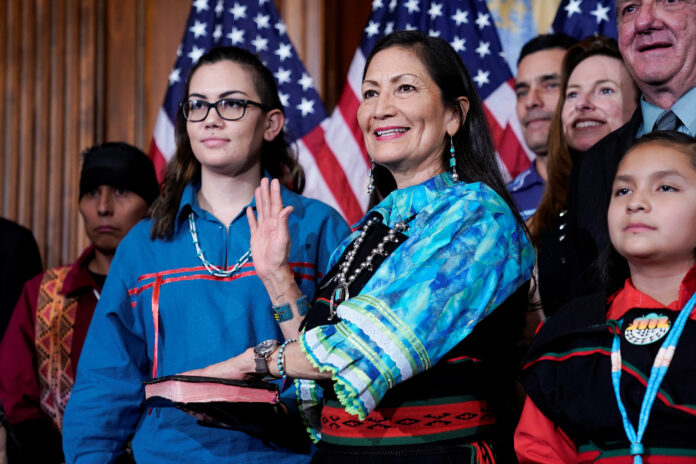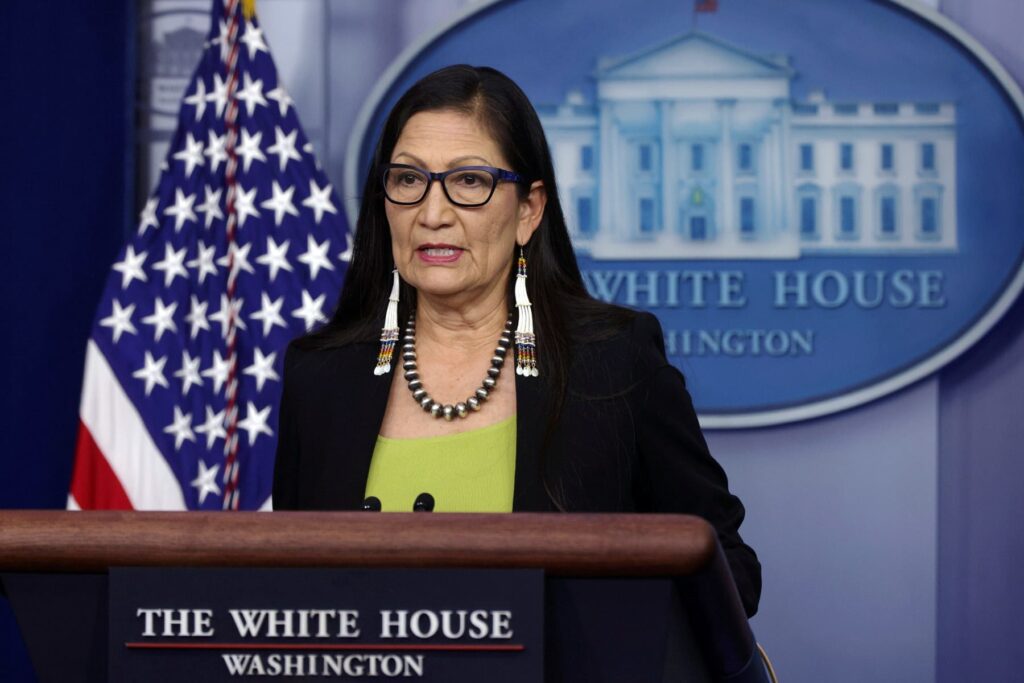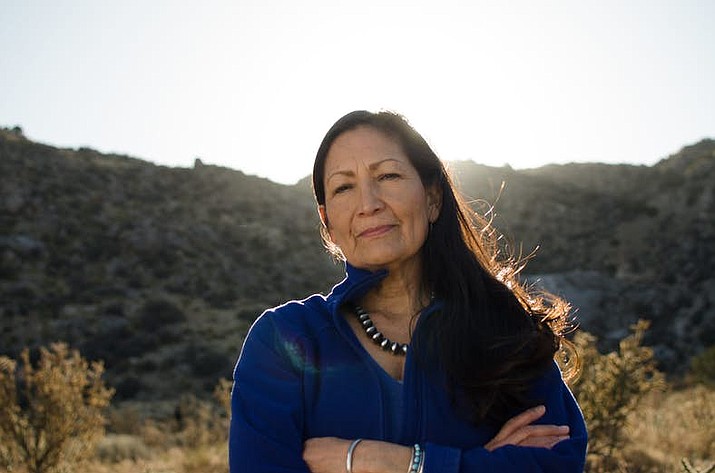
( ENSPIRE Feature ) Secretary Deb Haaland’s Appointment to the Cabinet Earlier This Year Provides Important Representation for Native Americans
ENSPIRE Contributor: Keegan Kerns
On March 16th, 2021, Deb Haaland assumed the office of Secretary of the Interior, making history as the first Native American to be a Cabinet Secretary. Despite some Republican opposition against her because of her strong opinions on climate policy, the Senate ended up confirming Deb Haaland as Secretary of the Interior in a 51-40 vote, enabling her to lead a crucial department in the administration’s efforts to combat climate change and conserve nature. With the Interior Department dealing with government-to-government relations between the U.S. and Native American tribes, Deb Haaland, a member of the Pueblo of Laguna and a 35th generation New Mexican is uniquely qualified to head this department to both heal a land damaged by climate change and a relationship between tribes and a federal government characterized by terrible racism and oppression.
While Deb Haaland’s appointment to Secretary of the Interior is inspiring and a significant landmark for Native Americans, her own personal journey as a single mother to Congresswoman and finally Cabinet member is one worth recognizing as extraordinary on a human level. As we enter November, Native American Heritage Month, it is imperative that we recognize the stories of changemakers like Deb Haaland and how they managed to make a difference.

Ms. Haaland was born to a 30-year combat Marine who saved six lives in Vietnam and a mother who was a Navy veteran that spent 25 years working at the Bureau of Indian Affairs. The strength of her family is evident and speaks to the broader trend of military service among Native Americans, who serve at a much higher rate than the national average and are often unrecognized for, something that Native American Heritage Month can hopefully address.
As a single mother, Secretary Haaland struggled with many issues that plague her parents, putting her in a position where she had to rely on food stamps at times or lived paycheck-to-paycheck as she managed to put herself through college and eventually Law School to support her child correctly. However, Secretary Haaland went so far as to volunteer at her child’s pre-school to afford this crucial childhood education so that her child could be on the same footing as her peers.
Eventually, Deb Haaland became more and more involved in her Laguna community, joining in endeavors such as working on the Laguna Development Corporation Board of Directors and advocating for more environmentally friendly business policies and practices. Deb Haaland soon became the first Native American woman to lead a State Party. Shortly after that, she became one of the first two Native American women elected to Congress, where she continued to focus on environmental justice, family-friendly policies, and issues regarding missing and murdered indigenous women.
After having been appointed Secretary of the Interior by President Biden, Deb Haaland has stated that “Growing up in my mother’s Pueblo household made me fierce. I’ll be fierce for all of us, our planet, and all of our protected land.” She has proven with her dedication to her family and throughout her career up to now just how effective this fierceness can be. Hopefully, she can continue to be an inspiring role model for other Native Americans as she works to protect our land and planet.

While Deb Haaland has already consistently broken down barriers in her career, the changes she can continue to make as Secretary of the Interior could easily be some of the most important. The Interior Department was often used as a tool of oppression against Native American tribes in its control of public lands and relationships between the U.S. government and Native American tribes. Still, with a fierce and educated Native American woman like Deb Haaland now at its helm, hopefully, the Department of the Interior can start to act like a fair and balanced institution that protects America’s lands and people regardless of race or heritage.
You can find more information about Deb Haaland’s journey as Interior Secretary here and on her Twitter.
Related Articles: Indigenous Arts Gallery at Tucson Museum of Art Creates A Community-Based Approach To Exhibition Development






